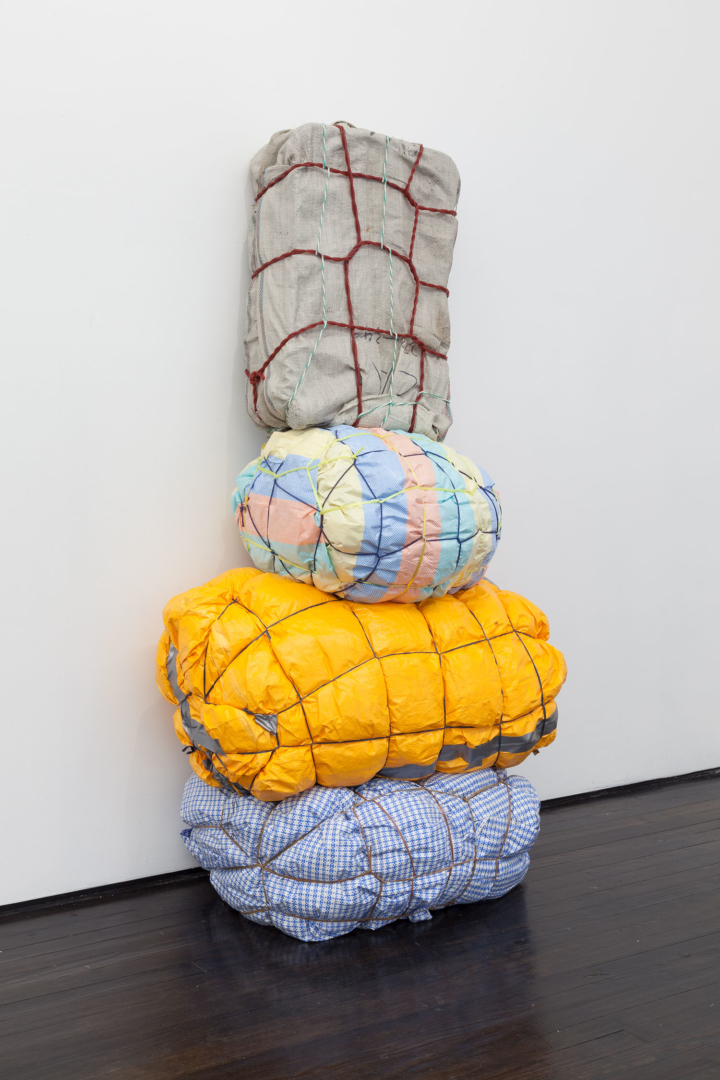It doesn’t take a native speaker to know there’s something amiss in Maia Ruth Lee’s new film The Stranger (all works 2018). A voice-over in Korean doesn’t seem to match up with its ostensible English subtitling: while the male speaker might be describing the pastoral scenes of Nepal presented in the film, the on-screen text discusses, among other topics, pregnancy, family, anxiety, and money.
This narratological slippage is the core of The Stranger: Lee wrote her own subtitles over her father’s footage, part of his linguistics fieldwork in the Himalayas shot in the late 1980s. The two voices interweave and never touch, but that asymptote doesn’t just linger as melancholy for Lee. The Stranger and “Access To Tools,” the broader exhibition to which the film belongs at Jack Hanley Gallery, instead went for something else. “Access to Tools” courted grace rather than pathos. The show was a poem written through the dual yet incommensurate voices of a private language and a cultural code.
Lee’s earlier presentations already centered questions of translation and meaning-making, but through a formalist sculptural language of wrought iron “glyphs,” small decorative designs hung on the wall. Such ciphers returned at Hanley in the series “Auspicious Glyphs”: their repetition and syntactical display on the gallery walls further suggested their grammatical organization. Lee also supplied an answer key of sorts, a paper document that explained the therapeutic potential of each symbol: an arched form could “enhance balance,” for example. The Stranger and “Auspicious Glyphs” both hint at the impossible and maybe absurd task of language, its responsibility to both expression (Lee’s personal sculptural vocabulary) and communication (the conveyance of what those sculptures do).
Between the film and the glyphs was “Bondage Baggage,” a group of bundles made of cardboard, luggage, and fabric held together by rope and tape. For Lee, the sculptures quote packages brought back by Nepalese migrant laborers as they return from abroad; the packaging conceals popular consumer goods in order to avoid theft. The exhibition’s broader questions of address are here politicized. “Bondage Baggage” hints at the quotidian, material stakes of irony, that is, technically speaking, the locution of one meaning while intending another. For that is the gift of “Access To Tools” — to cleave irony from tone, and to inventory the ambivalence of any encounter, especially one across borders.


